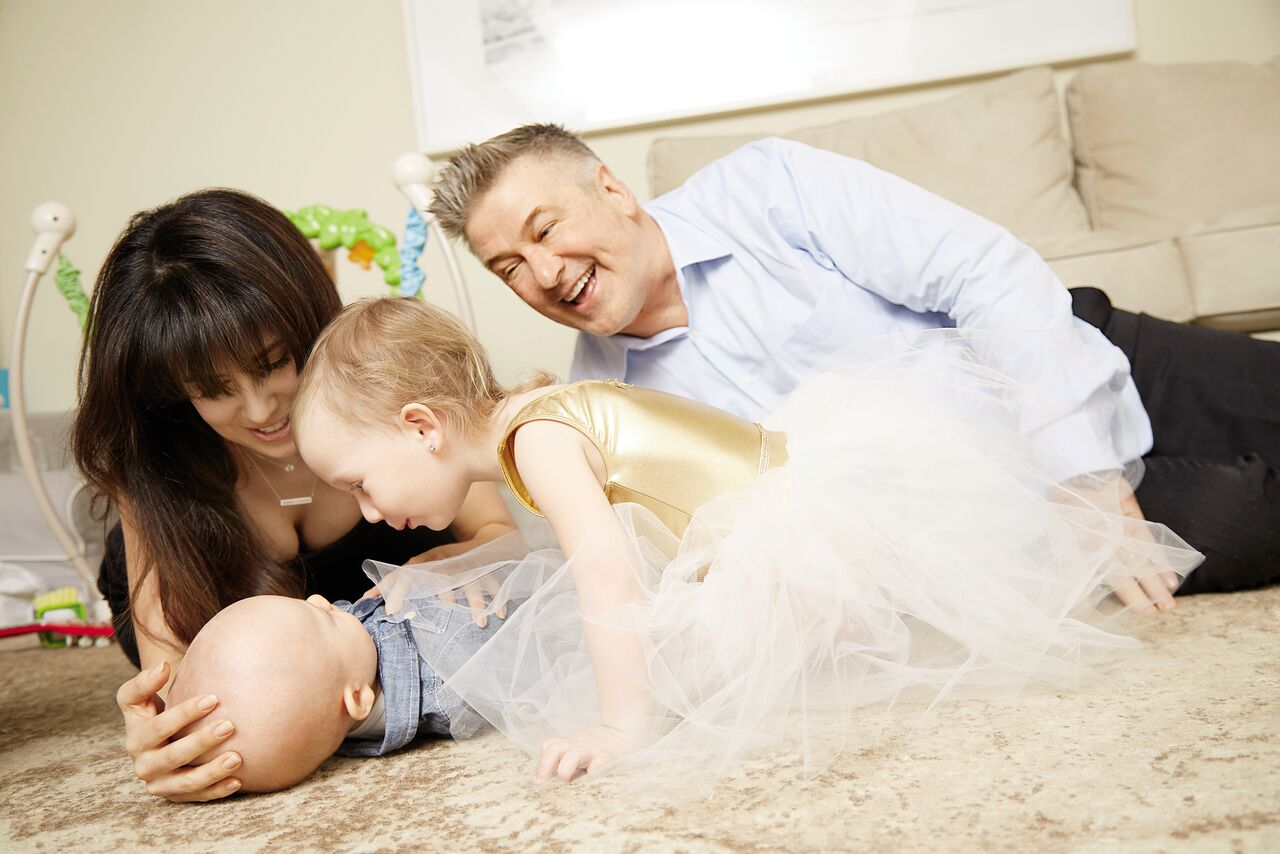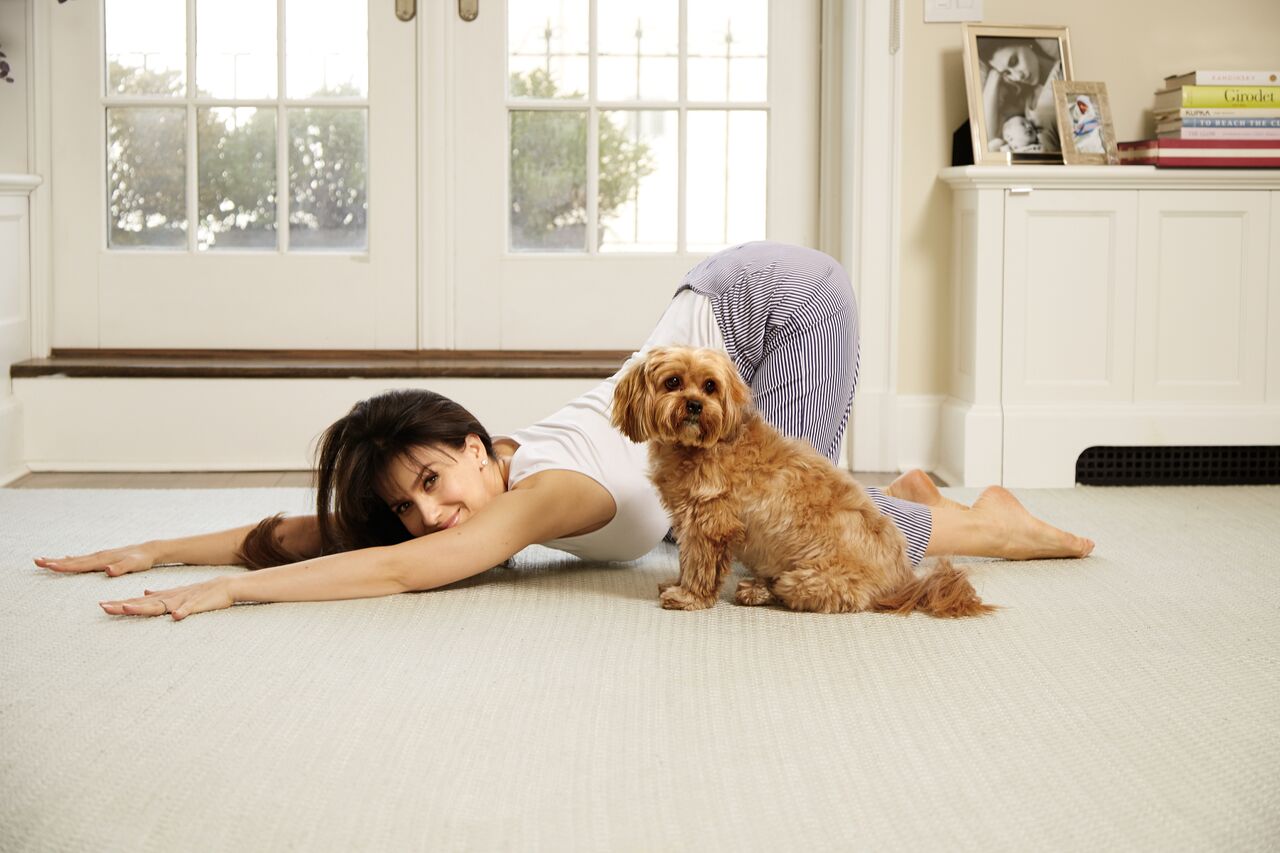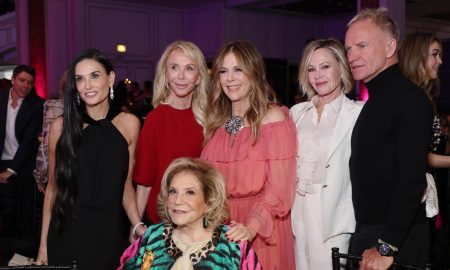
Hilaria Baldwin is a reformed workaholic, although one who has hardly slowed down. In her new book, The Living Clearly Method, she chronicles how a fast-forward mind-set once cost her—big-time—and how a major physical setback led her to a new, centered, and mindful way of life. She outlines her experiences traveling from frazzled to Zen in the book’s detailed, thoughtfully written chapters that suggest a level of wisdom and life smarts much more typical of someone decades older (Baldwin is 33). Most workaholic cures involve pulling back and detoxing from the tech, but Baldwin espouses a different approach for the incurably overprogrammed—in other words, most New Yorkers. She knows her audience, having taught countless yoga classes to the city’s high-achievers and multitaskers who are not about to chill out at a beach on a daily basis—but who want to live a more enjoyable, less stressful, and healthy lifestyle. More important, Baldwin is her audience, with 24/7 demands on her time as a successful yoga entrepreneur, a mom to three small children, and a spouse (Alec Baldwin) with a high wattage career that has amped up even more since Donald Trump became president. (Alec, of course, is known for his searing impersonations of the 45th president on Saturday Night Live.)
“I didn’t know how to enjoy life,” says Baldwin of the years she spent as a dancer and building her yoga business. From what she recounts in her book, she was a go-getter from adolescence, always focused on high achievement. Her passion for dance so consumed her that she forgot the meaning of the word “downtime,” ignoring chronic muscle pain caused by rigorous workouts and performance regimens. Baldwin turned to yoga to help reduce stress, but as she had with dancing, went all in, falling in love with the discipline so much that she began her own business teaching classes. “I wanted to open up my own studio and worked seven days a week, even Christmas,” she recalls. “I got up at 4:30 a.m. and returned to my tiny apartment at 9:30 or 10 p.m., just exhausted.” Even though her on-the-go routine had resulted in chronic hip pain, she worked through it, until one day she collapsed on the ground—her leg bone had become severed from her hip. Then came surgery, crutches, wheelchairs, and a year to recuperate and to reflect on what happened.
“My injury shone a glaring light on my self-sabotaging ways,” she says in the book. Baldwin knew her life needed a reboot, a new M.O., and that meant deprogramming so she could practice and refine more of what she taught—the principles at the core of her Living Clearly method—for a more balanced lifestyle. “I had to learn my own philosophy,” she admits.

Those principles, centered on connecting mind to body for a more fulfilling lifestyle, are at the core of her book. But The Living Clearly Method isn’t a manual of favorite yoga poses. Chapters focus on ways to combat negative behaviors by mastering the principles of perspective (seeing the bigger picture); learning breathing practices to help keep you in the moment and grounding methods for increased body awareness; and finding balance (the principle that Baldwin says she finds the toughest to get right) for all the things in life that compete for your attention, as well as strategies for deprogramming negative emotions.
Baldwin may have learned the hard way how to slow down, but when it came to the book, she didn’t hesitate to practice what she preaches. When she started the project, she says she wanted to do it all on her own, but realized, with her third child on the way, how impractical that would be. “I can write, but I am not a writer,” she says, so she enlisted two editors to help coordinate the project and “put it in a format that readers could digest.”
Writing the book was an interesting process, according to Baldwin, as sharing personal experiences—like her bouts with anorexia and bulimia—went from something that was just “between me and my computer” to the public at large. “On one level, you know it’s going to be out there,” she says. “On another level, realizing people are knowing about your struggles with eating disorders was shocking. It really hit me when I went on Dr. Oz’s show [to discuss the book]. He said, ‘Thank you for talking about this. I know how hard it is.’ That’s when I thought, Oh my god, I told people about it.”
Since “living clearly” is all about finding the right mind-body connection, I asked her how her principles have impacted her husband—after all, performing is the ultimate exercise in connecting thought to movement and requires a constant ability to be in the moment. “If I could have my way with him, he’d be 10 times more healthy,” she says with a laugh. But Baldwin acknowledges Alec’s role in getting her to learn to relax. When they first started dating, “he convinced me to take a day off, then two, to carve out downtime to be in the Hamptons with him.”
Downtime in the Hamptons is something Baldwin has learned to embrace—and relish. She says for the first time in four years, “she won’t be pregnant” this summer and that she and Alec plan to spend the months of July and August off-the-grid on the East End. You assume that a lengthy stay by the beach also means more time to embrace her book’s methods, but to that she responds with a firm no. Like the adage about good captains not being made in calm seas, she says the successful “living clearly” practitioner learns the principles best in the thick of city chaos. “I want you to hear all the noise, the subways, the jackhammer. In New York, you are constantly being tested. The city is where I taught myself to be calm. And with exercises, anyone can learn to do the same, even amid the craziness.”

And speaking of craziness, how has she kept her calm when confronted with the hoopla that comes with being married to a famous, headline-generating actor? Baldwin says that prior to meeting Alec, she didn’t own a TV or follow the lifestyles of the bold-faced and fabulous. “There was a learning curve,” she admits of being catapulted into paparazzi land. “I thought I would be stressed out and paranoid all the time. We had bouts with the tabloids. Alec always had to deal with them, even though there were times he didn’t have a great relationship with that type of media,” she says. “Some of it was on our part, other times it was people fishing for things.” Baldwin says she was determined to take charge of the experience—as much as anyone can when paps are following your every move. “Now when I see a photographer outside, I smile and wave,” she says. “I don’t want to be running from people taking pictures of Alec and me. I’m a lot more tranquil.” One public interaction has both surprised and delighted the Baldwins. “I can’t tell you how many people come up to us on the street to thank my husband for impersonating Trump,” she says. “Dozens. They call Alec a public servant for doing it.”
Beyond dealing with the paps, Baldwin says she hasn’t found it difficult keeping her bearings in a high-profile marriage. Her “living clearly” methods have helped, but Baldwin hasn’t forgotten her pre-fame past either. “People think I eat golden cereal in the morning,” she says. “That you are part of this other world…but my living in a tiny apartment and working all the time in a yoga studio was like five minutes ago,” she admits, insisting that her life with Alec and the kids, for the most part, is an unglamorous one. “I know many people will roll their eyes when they read that,” she says. “And we have so much to be grateful for. We are blessed with health, blessed financially, and we have our family. But at the end of the day, what I really want is to spend time with my husband and kids and get a few hours of sleep before the baby wakes up. We like to keep things simple. Our home life is the most important thing to us.”
Baldwin says that she and her husband, whom she met at a restaurant, share the same priorities about putting family first. “When we were dating, we spoke every single day for six weeks about what he wanted in life, what I wanted in life—to see if we were on the same page. Alec was in his 50s; I was 25 or 26. He said, ‘I want to make sure this is right.’ We realize what’s important. And we have stayed a good team.”
























